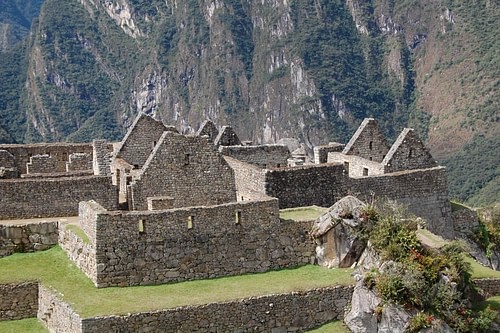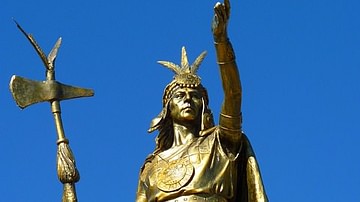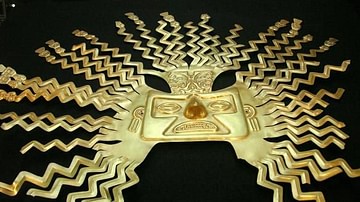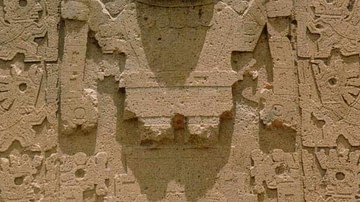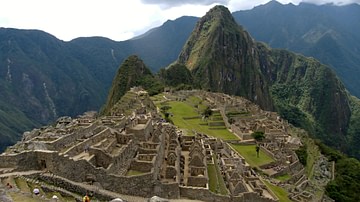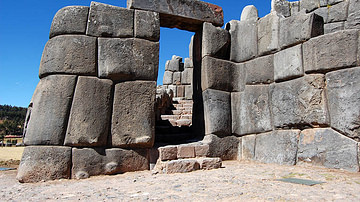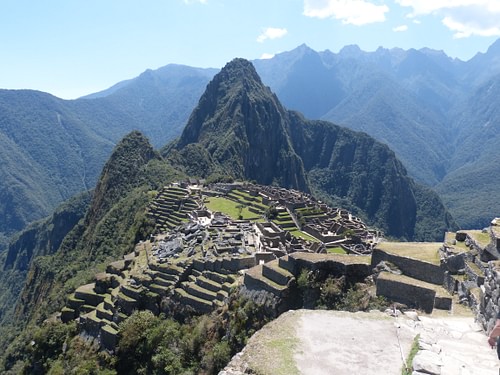
Machu Picchu is an Inca settlement located in the High Andes of Peru in the Urubamba Valley, north of Cuzco. The site, perched high above the Urubamba river, has been variously described as a fortress, imperial retreat and ceremonial precinct. It was founded by Pachacuti Inca Yupanqui in c. 1450 CE, had capacity for around 1,000 residents at its peak, and ranked amongst the most sacred of all sites for the Inca. Following the collapse of the Inca empire, Machu Picchu was abandoned and forgotten, only to be rediscovered in 1911 CE by the explorer Hiram Bingham. Machu Picchu is listed by UNESCO as a World Heritage Site.
Purpose
Machu Picchu (meaning 'old hill') was an imperial estate founded by and belonging to Pachacuti Inca Yupanqui, the Inca ruler, in the mid-15th century CE. The ownership of the site was later passed to Pachacuti's successors. On its rediscovery by the explorer Hiram Bingham in 1911 CE (although local residents in the valley had always known of the site's existence) it was claimed as the last capital of the Incas. However, this proved to be untrue when the actual final capital was discovered at Vilcabamba, further downstream in the Urubamba Valley.
Another hypothesis concerning the site posed by early historians was that Machu Picchu was a fortress and the strong walls, large towers, and dry moats were cited in support of this theory. The need for fortification perhaps sprang from a series of severe droughts which made the competition for resources fierce. This would also explain why the site was not occupied for very long as when the water situation improved the necessity for such citadel sites declined. Once again though, further study has revealed that most of the architecture was designed for religious purposes and the fortifications may well have been put in place to ensure only a select few could enter this sacred site. In further support of this interpretation, a road was discovered which linked the site to several residential settlements dotted along the valley. The most likely purpose of Machu Picchu, then, was as a sacred site, probably to the sun god Inti and with the additional purpose of reminding the recently conquered local population of the power and might of Pachacuti and the Inca empire centred at its capital Cuzco. The site was abandoned by the Inca shortly before Pizarro and the Spanish conquistadors arrived. The invaders never reached Machu Picchu, though, and the site would remain unknown to the wider world for 400 years.
Materials & Layout
Machu Picchu is a fine example of the Inca practice of shaping architecture around the natural terrain. Ridges were made into plateaus for building upon and slopes were terraced using stone bulwarks. Further, constructions were made to aesthetically blend with their surroundings. For example, the profile of the Sacred Rock actually mimics one of the mountain peaks behind it. Finally, very often windows and doorways were deliberately positioned to capture the best views of the surrounding mountains.
Rock was a material the Incas had special reverence for. Stone was even thought of as a living substance and in the Inca language (Quechua) the word for it translates as 'to begin'. Stone was shaped with great skill and natural rock outcrops were moulded to suit various purposes. For example, below the Torreón (Observatory), a room was carved out of a natural cleft in the rock and used as a temple to the sun god Inti. The Intihuatana Stone ('Hitching Post of the Sun'), also known as the intiwatana, sitting at the highest point of the sacred complex, was carved with great care into a device for astronomical observations and made a tangible link between the earth and sky. The carved stone pillar on top of the polygonal stone base was used like a sundial to record the movements of the sun and, during solstices, priests symbolically tied the sun to the earth using a cord.
The site of Machu Picchu is composed of two distinct areas: a central complex of closely packed buildings arranged around a central square and a series of western terraces. The structures on the east and southern sides were likely residential and follow a pattern of single-roomed dwellings with an enclosed patio. However, the exact function of most of the buildings at the site is not known for certain. Many of the buildings display the great rock carving and masonry skills of the Inca. The buildings use locally quarried granite, one of the hardest stones, which was cut with great precision and then finished when in position to produce walls of blocks so well fitted together that mortar was not necessary. The irregular lines of blocks also create a pleasing aesthetic effect and make the structures highly resistant to earthquakes.
Architecture
Amongst the most impressive structures at the site both for its size and unusual curved masonry is the D-shaped tower known as the Torréon, mentioned above. The single window of the tower was aligned with the Pleiades stars as they appeared in the 15th century CE and the building's astronomical purpose is further evidenced by the presence of a stone protruding from the floor which may have been used to plot the sun on the June solstice. The Temple of the Three Windows is another impressive example of fine stone work and was also used as an astronomical observation post. The many administrative kallanka buildings also employed fine stone blocks made to fit perfectly together. These buildings also had stone pegs protruding from their gables to which a thatched roof would have been attached. Another type of building is the prison-like structures which may have been used to house captured nobles until a ransom was paid. The complex also has a cavern structure and a sacrificial stone block sculpted into the form of a condor.
Water was supplied to the site via 14 natural springs whose waters were collected and re-located via 16 cut-stone channels. Another curious feature is the stone steps which lead from Machu Picchu up to the small retreat Huayna Picchu (meaning 'young hill'), perched on a rock outcrop. Some graves have been excavated at the site but these typically belong to individuals of lower rank such as administrative staff resulting in a paucity of high value grave goods, and there are a peculiarly large proportion of female remains. Pottery finds have offered some clues to daily life at the site and derive from four separate locations, amongst which is the Chuma blackware.
Excavations and reconstruction are ongoing at Machu Picchu, now a UNESCO World Heritage Site, and despite its remote location it continues to draw tourists from around the world having safely secured its status as one of the most recognisable and photographed ancient sites in the world.

